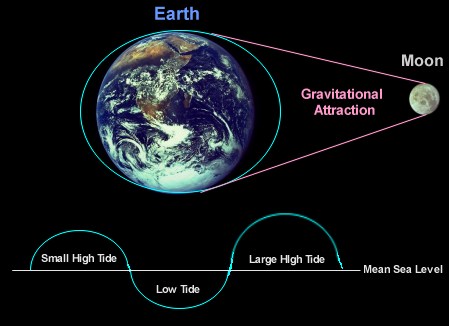지구의 자전이 늦어진다거나, 그로인해 달이 지구로부터 조금씩 멀어진다거나, 지구는 달처럼 자전을 멈추고, 지구의 절반이 영구음영이 지고, 그런 지구를 달이 영영 떠나간다는 이야기들…. 그런 것들이 75억년이라는 시간이 흐른 뒤에 일어난다고 시간의 포장에 사이면, 먼 동화같은 이야기로 들리기 쉽다. 하지만, 실제로 달이 매년 3.8cm 씩 지구로 부터 멀어지고 있으며, 매일 밤 내가 보는 달이 내 평생에 볼 수 있는 가장 큰 달이라는 점은 다른 감상을 갖게 한다. 이 이유는 무엇일까.
Moon Phases
Every night, the moon shows a different face in the night sky. On some nights we can see its entire face, sometimes it’s partial, and on others it isn’t visible at all. These phases of the moon aren’t random — they change throughout the month in a regular and predictable way.
As the moon travels in its 29-day orbit, its position changes daily. Sometimes it’s between the Earth and the sun and sometimes it’s behind us. So a different section of the moon’s face is lit up by the sun, causing it to show different phases.
Over the billions of years of the moon’s existence, it has moved farther away from the Earth, and its rate of rotation has also slowed. The moon is tidally locked with the Earth, which means that the Earth’s gravity “drags” the moon to rotate on its axis. This is why the moon rotates only once per month and why the same side of the moon always faces the Earth.
Tides
Every day, the Earth experiences tides, or changes in the level of its oceans. They’re caused by the pull of the moon’s gravity. There are two high tides and two low tides every day, each lasting about six hours.
The moon’s gravitational force pulls on water in the oceans and stretches the water out to form tidal bulges in the ocean on the sides of the planet that are in line with the moon. The moon pulls water on the side nearest it, which causes a bulge toward the moon. The moon pulls on the Earth slightly, which drags the Earth away from the water on the opposite side, making another tidal bulge there. So, the areas of the Earth under the bulge experience high tide, while the areas on the thin sides have low tide. As the Earth rotates underneath the elongated bulges, this creates high and low tides about 12 hours apart.
The moon also stabilizes the Earth’s rotation. As the Earth spins on its axis, it wobbles. The moon’s gravitational effect limits the wobble to a small degree. If we had no moon, the Earth might move almost 90 degrees off its axis, with the same motion that a spinning top has as it slows down.
지구의 자전이 느려지고 있다.
이렇게 자전 속도가 느려지면 하루 길이가 늘어나는 것 뿐 아니라, 달도 멀어진다. 1969년 8월~1989년 4월까지 20년에 걸쳐 지구와 달 사이 거리를 레이저로 측정한 결과, 달이 1년에 3.8cm씩 멀어지고 있다는 것이 밝혀졌다. 이런 현상은 지구의 자전 속도가 느려지면서 줄어드는 각운동량주1만큼 달의 각운동량이 증가하기 때문에 발생한다. 실제로 과학자들이 계산한 결과, 45억 년 전 지구가 갓 탄생했을 때 지구와 달 사이의 거리는 24만km에 불과했다고 한다. 현재 38만km인 걸 감안하면 45억년 동안 14만km나 이동한 셈이다.





